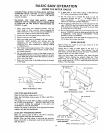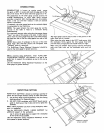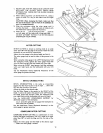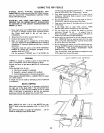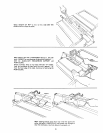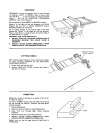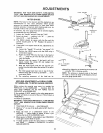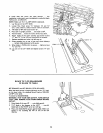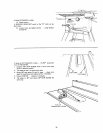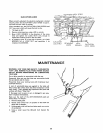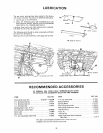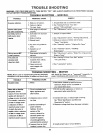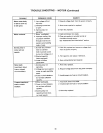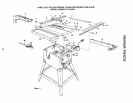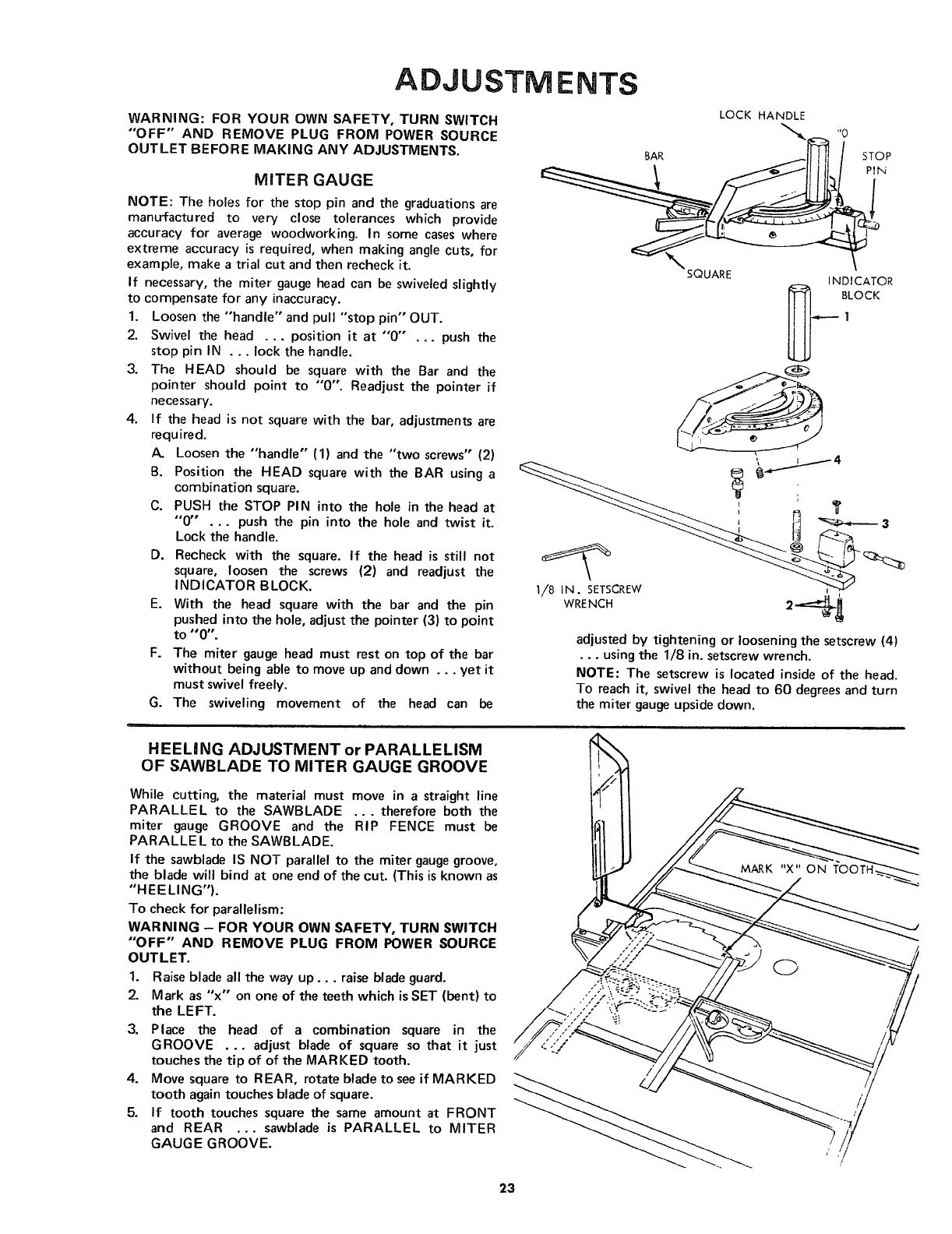
ADJUSTMENTS
WARNING: FOR YOUR OWN SAFETY, TURN SWITCH
"OFF" AND REMOVE PLUG FROM POWER SOURCE
OUTLET BEFORE MAKING ANY ADJUSTMENTS•
MITER GAUGE
NOTE: The holes for the stop pin and the graduations are
manu-_actured to very close tolerances which provide
accuracy for average woodworking• In some caseswhere
extreme accuracy is required, when making angle cuts, for
example, make a trial cut and then recheck it.
If necessary, the miter gaugehead can be swiveled slightly
to compensate for any inaccuracy•
1. Loosen the "handle" and pull "stop pin" OUT.
2. Swivel the head ... position it at "'0"" ..• push the
stop pin IN . .• lock the handle•
3• The HEAD should be square with the Bar and the
pointer should point to "0". Readjust the pointer if
necessary•
4. If the head is not square with the bar, adjustments are
required.
A. Loosen the "handle" (1) and the "two screws" (2)
B. Position the HEAD square with the BAR using a
combination square.
C. PUSH the STOP PIN into the hole in the head at
"0'" ... push the pin into the hole and twist it.
Lock the handle.
D. Recheck with the square• If the head is still not
square, loosen the screws (2) and readjust the
INDICATOR BLOCK.
E. With the head square with the bar and the pin
pushed into the hole, adjust the pointer (3) to point
to "0".
F. The miter gauge head must rest on top of the bar
without being able to move up and down . •. yet it
must swivel freely.
G. The swiveling movement of the head can be
LOCK HANDLE
"_ "0
BAR STOP
SQUARE
INDICATOR
_ BLOCK
-_--- 1
..</ _,
g
WRENCH 2-_ '
adjusted by tightening or loosening the setscrew (4)
•.. usingthe 1/8 in. setscrew wrench.
NOTE: The setscrew is located inside of the head.
To reach it, swivel the head to 60 degreesand turn
the miter gaugeupside down.
HEEUNG ADJUSTMENT or PARALLELISM
OF SAWBLADE TO MITER GAUGE GROOVE
While cutting, the material must move in a straight line
PARALLEL to the SAWBLADE .. therefore both the
miter gauge GROOVE and the RIP FENCE must be
PARALLEL to the SAWBLADE.
If the sawblade IS NOT parallel to the miter gaugegroove,
the blade will bind at one end of the cut. (This isknown as
"HEELING")•
To check for parallelism:
WARNING - FOR YOUR OWN SAFETY, TURN SWITCH
"OFF" AND REMOVE PLUG FROM POWER SOURCE
OUTLET•
1. Raiseblade all the way up... raiseblade guard.
2. Mark as "x'" on one of the teeth which is SET (bent) to
the LEFT.
3. Place the head of a combination square in the
GROOVE ... adjust blade of square so that it just
touches the tip of of the MARKED tooth.
4. Move square to REAR, rotate blade to see if MARKED
tooth again touches blade of square.
5. If tooth touches square the same amount at FRONT
and REAR ... sawblade is PARALLEL to MITER
GAUGE GROOVE.
23





